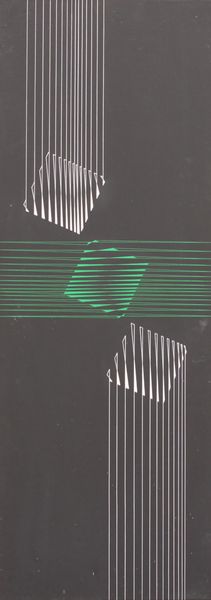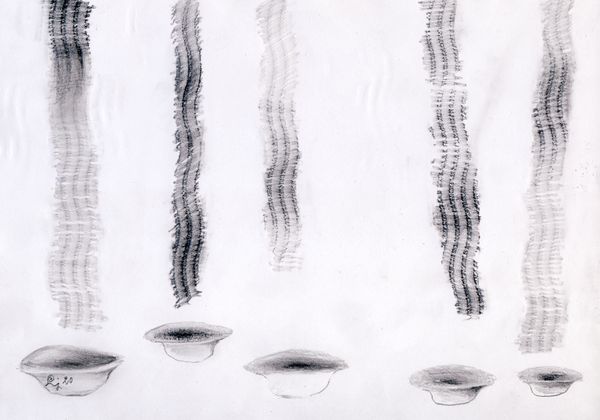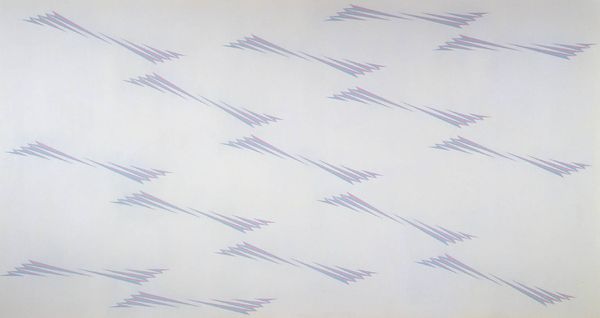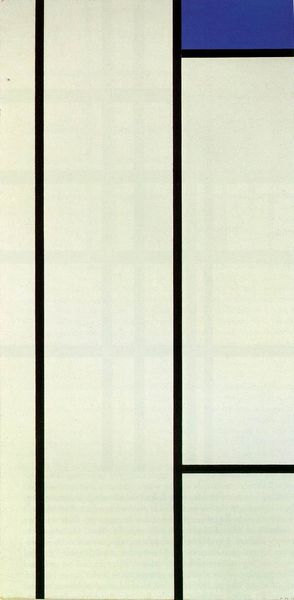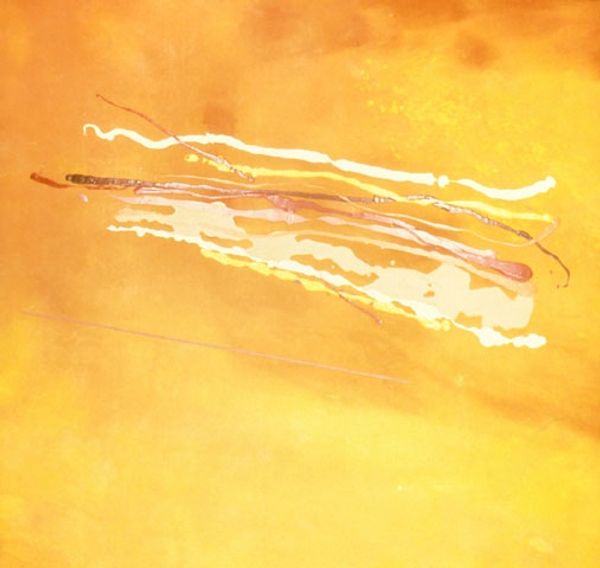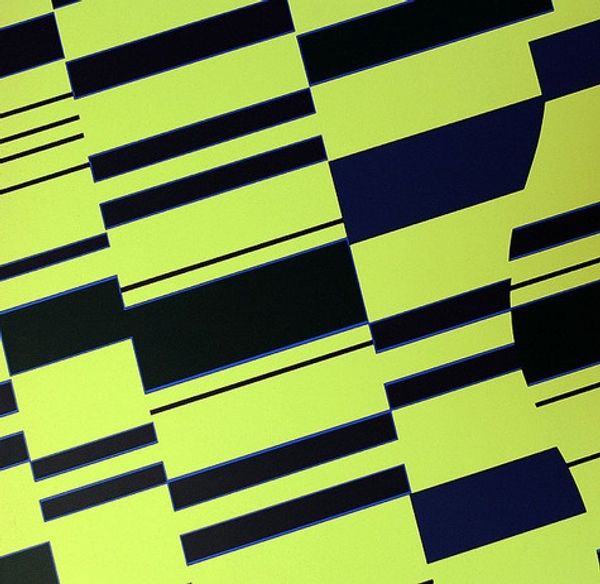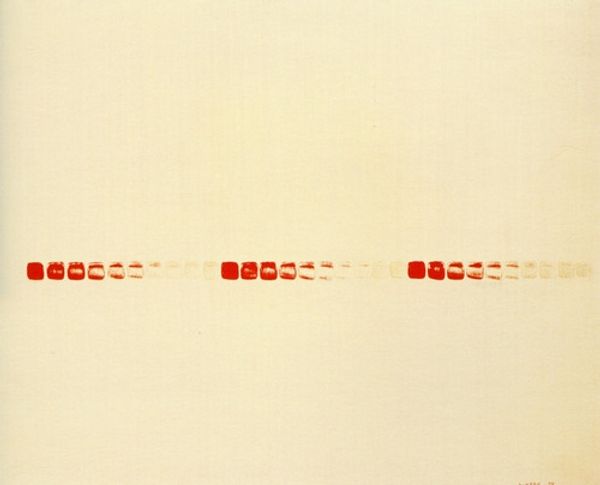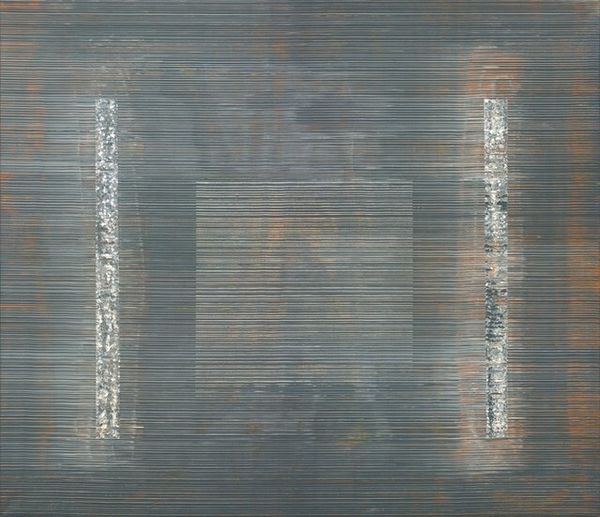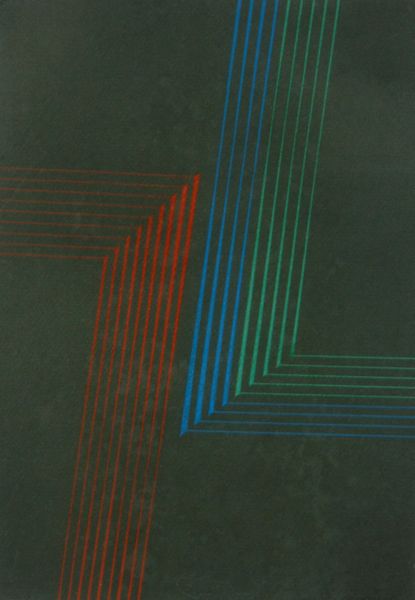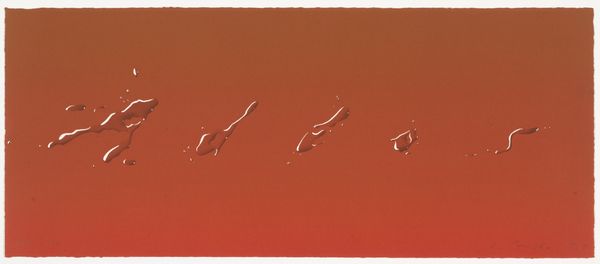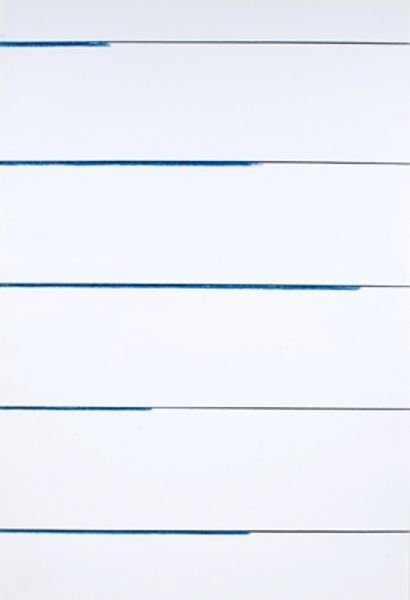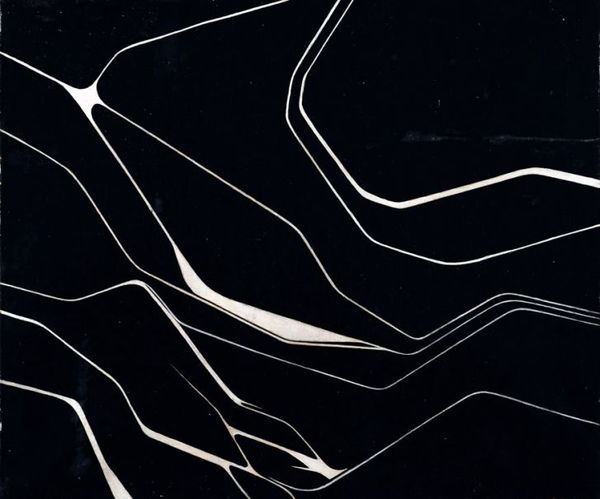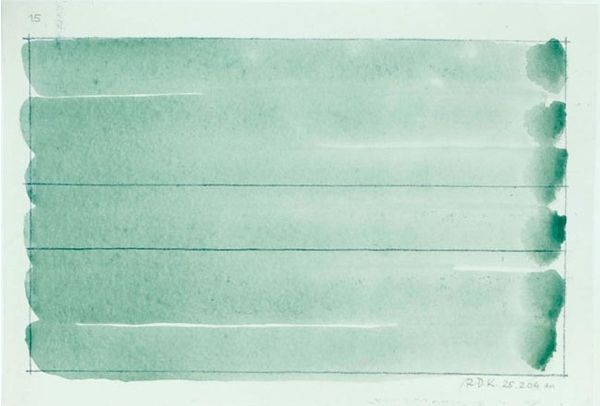
painting, oil-paint
#
painting
#
oil-paint
#
landscape
#
abstraction
#
line
#
modernism
Copyright: Amedee Ozenfant,Fair Use
Curator: Welcome. Before us hangs "36 Voiles," painted in 1963 by Amédée Ozenfant using oil on canvas. Editor: It feels… tranquil. Ethereal, even. The dominant blue is soothing, almost melancholic, and the stark white sails, simplified as they are, suggest movement, or maybe even longing. Curator: It's fascinating to consider Ozenfant's artistic journey here. Emerging from Purism, he was concerned with a utilitarian aesthetic. This evolved into more expressionist abstract compositions informed by postwar philosophy. What is communicated when architecture meets emotional life in painting? Editor: The grid of vertical and horizontal lines behind the sails. Could these symbolize societal structures against which the 'voiles' or 'sails' navigate? It suggests a dance between individual desire and the constraints of modern existence. Or it may echo the 'machine aesthetic' but with soft edges that still imply freedom. Curator: Certainly, one interpretation sees the sailboat as a historical symbol. Beyond naval dominance, they denote exploration, discovery, even migration, thus invoking themes of diaspora, colonialism, and post-colonial identities that permeate culture. In art terms, consider similar compositions by his contemporaries like Fernand Léger in light of industrialization or De Chirico. Editor: Beyond social commentary, these sail motifs recur across cultures representing aspiration. The ancient Egyptians saw sailboats representing travel into the afterlife. Might this suggest not merely sociopolitical reflections but something deeper – an acknowledgement of mortality perhaps? I am also fascinated how this relates to 'pattern recognition' – whether the number of sailboats indicates significance of '36' across cultures like in numerology. Curator: Ozenfant saw painting, at this time, as a process of "ordering disorder" to seek balance. So, both exist alongside the other within his works – turbulence, aspiration, constraint, freedom… It reminds us art rarely presents just one single idea or affect. Editor: Right, as if his brush strokes were whispering multiple possibilities. A meditative reflection of modernity’s undercurrents, inviting viewers to project, wander, question… and perhaps re-imagine the possibilities. Curator: Precisely. The piece creates a moment to confront what existed for Ozenfant, and also for us today.
Comments
No comments
Be the first to comment and join the conversation on the ultimate creative platform.
